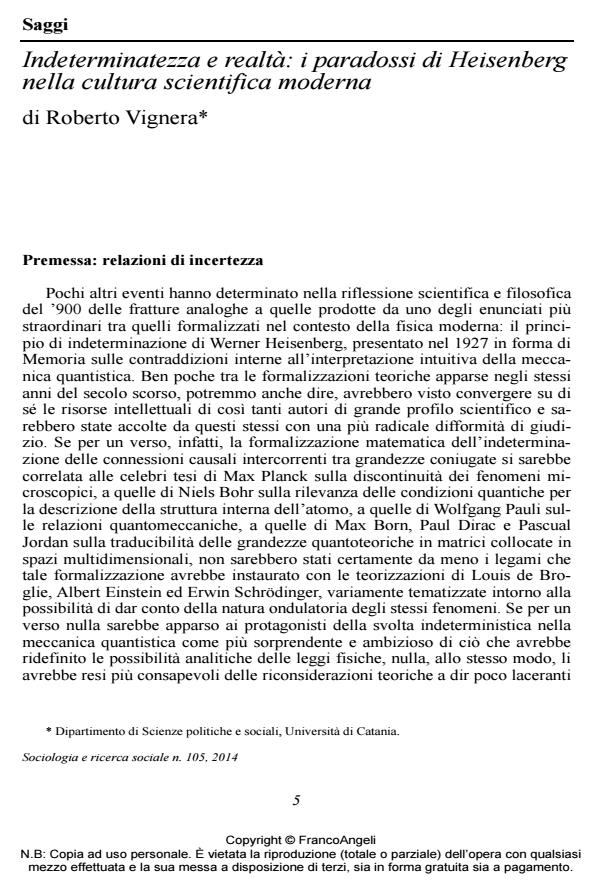Indeterminacy and Reality: Heisenberg’s Paradoxesin Modern Scientific Culture
Journal title SOCIOLOGIA E RICERCA SOCIALE
Author/s Roberto Vignera
Publishing Year 2015 Issue 2014/105
Language Italian Pages 45 P. 5-49 File size 240 KB
DOI 10.3280/SR2014-105001
DOI is like a bar code for intellectual property: to have more infomation
click here
Below, you can see the article first page
If you want to buy this article in PDF format, you can do it, following the instructions to buy download credits

FrancoAngeli is member of Publishers International Linking Association, Inc (PILA), a not-for-profit association which run the CrossRef service enabling links to and from online scholarly content.
Considered one of the most extraordinary statements of modern physics, theHeisenberg Uncertainty Principle has had a great seductive power on scholarsof different disciplines. Its popularity, especially in the field of the social sciences,has been all the more striking as it related to a real transfiguration of itsimplications. In particular, its connection and conformity to the dictates ofcognitive relativism and to the simple interaction between observing and observedsystems.
Roberto Vignera, Indeterminatezza e realtà: i paradossi di Heisenberg nella cultura scientifica moderna in "SOCIOLOGIA E RICERCA SOCIALE " 105/2014, pp 5-49, DOI: 10.3280/SR2014-105001